Why this resume works
- Quantifies accomplishments: Including measurable accomplishments, such as boosting student grades by 20% and retention by 15%, the applicant highlights their significant educational impact.
- Highlights industry-specific skills: Skills in curriculum development and instructional design show the applicant’s fit for education roles, emphasizing industry-specific expertise important for crafting effective learning experiences.
- Illustrates problem-solving ability: By implementing a curriculum that increased engagement by 30%, the applicant showcases their problem-solving skills through innovative strategies in education settings.
More Tutor Resume Examples
Explore our tutor resume examples to learn how to highlight your teaching skills and relevant experience. These teaching resume samples guide you in crafting a resume that effectively presents your educational expertise to potential employers.
Entry-Level Tutor
Why this resume works
- Centers on academic background: With a master’s in curriculum and instruction, the applicant’s educational foundation supports their early career achievements in student engagement and performance improvement.
- Effective use of keywords: Incorporating role-specific keywords like “curriculum development” and “student engagement” strategically boosts the resume’s chances with applicant tracking systems.
- Shows digital literacy: Skill in educational technology highlights digital literacy; integrating computer skills ensures readiness for tech-driven learning environments.
Mid-Level Tutor
Why this resume works
- Points to measurable outcomes: With achievements like boosting student grades by 15% and client satisfaction by 30%, the applicant effectively showcases their ability to drive measurable progress in educational settings.
- Demonstrates language abilities: Language skills in Spanish, French, and German reflect a strong foundation that supports diverse and cross-cultural communication.
- Clear contact information: An easily readable resume header ensures the applicant’s contact details are clear, making it straightforward for potential employers to reach out quickly.
Experienced Tutor
Why this resume works
- Lists relevant certifications: The inclusion of certifications like National Tutoring Association Certified Tutor and TESOL reflects ongoing dedication to professional growth in education.
- Showcases impressive accomplishments: Publishing academic guides and developing a curriculum adopted by local schools showcase accomplishments that signify substantial contributions to educational advancements.
- Sections are well-organized: Strategic use of bullet points and clear headers transforms complex job roles into easily scannable sections, improving the reader’s navigation through diverse responsibilities.
Tutor Resume Template (Text Version)
Jane Smith
Minneapolis, MN 55410
(555)555-5555
Jane.Smith@example.com
Professional Summary
Experienced tutor and education specialist focused on personalized learning methodologies, enhancing student achievement with engaging instructional design.
Work History
Tutor
Bright Minds Tutoring – Minneapolis, MN
April 2024 – July 2025
- Increased student grades by 20% in exams
- Developed 50 personalized lesson plans
- Mentored 30 students in various subjects
Academic Coach
Scholars Network – Minneapolis, MN
February 2021 – March 2024
- Boosted student retention by 15%
- Conducted 60 workshops for skill improvement
- Guided 25 students to achieve honor roll
Learning Specialist
Excel Education Center – Cedar Valley, MN
August 2019 – January 2021
- Implemented new curriculum increasing engagement by 30%
- Trained 40 educators on learning strategies
- Coached 50 students in advanced subjects
Skills
- Curriculum Development
- Subject Matter Expertise
- Instructional Design
- Student Assessment
- Learning Strategies
- Classroom Management
- Online Tutoring
- Educational Technology
Education
Master of Education Education
Harvard University Cambridge, Massachusetts
June 2018
Bachelor of Arts English Literature
University of Illinois Urbana-Champaign, Illinois
June 2016
Certifications
- Certified Professional Tutor – National Tutoring Association
- Advanced Teaching Techniques – International Educators Association
Languages
- Spanish – Beginner (A1)
- French – Intermediate (B1)
- German – Beginner (A1)
Related Resume Guides
- Early Childhood Assistant
- Early Childhood Teacher
- Elementary Teacher
- English Teacher
- ESL Teacher
- Foreign Language Teacher
- French Teacher
- Fresher Teacher
- Graduate Assistant
- High School Teacher
- Homeschool Teacher
- Language Professor
- Middle School Teacher
- Montessori Teacher
- New Teacher
- Nurse Educator
- Physics Professor
- Piano Instructor
- Preschool Teacher
- Retired Teacher
- Social Science Teacher
- Spanish Teacher
- Student Teacher
- Summer School Teacher
- Teacher
- Teaching Assistant
- University Professor
Advice for Writing Your Tutor Resume
If you’re looking to land a tutor position, crafting a standout resume is your first step. Whether you’re helping students master math or excel in English, your resume should highlight your passion for teaching and ability to connect with learners. Explore our tips on how to write a resume tailored specifically for tutors and discover how to effectively showcase your teaching skills and experience.
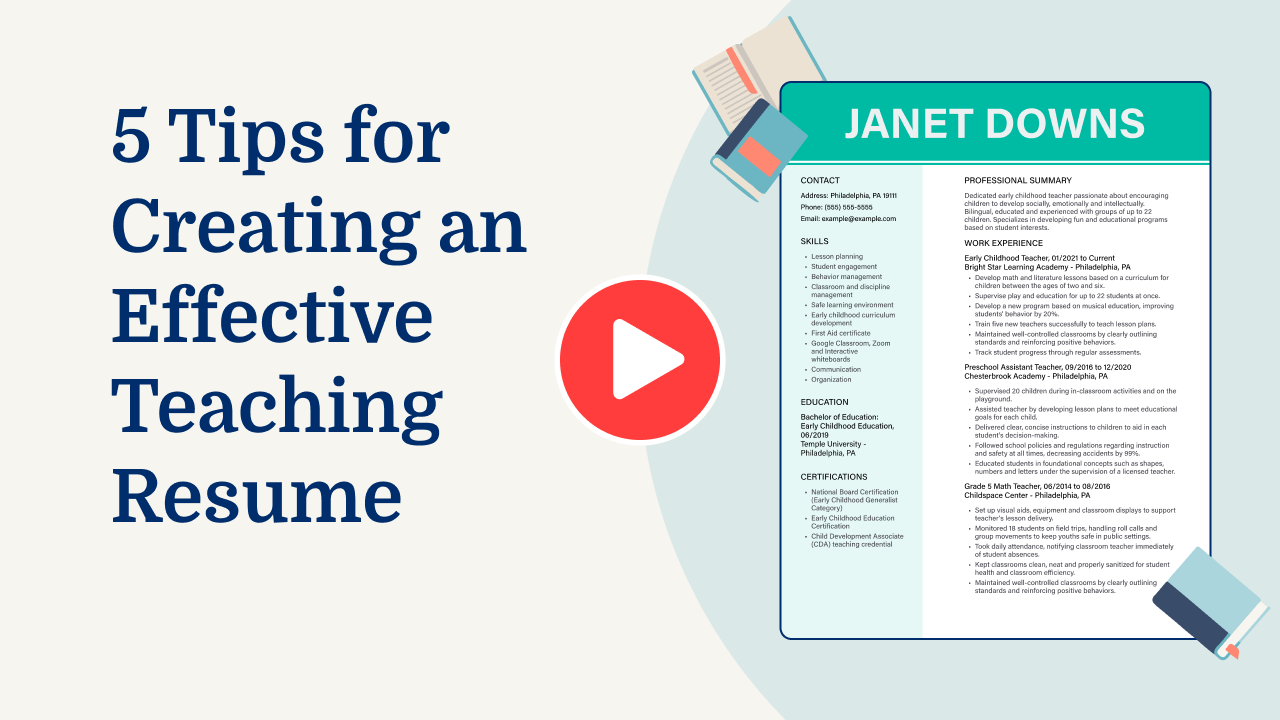
Highlight relevant certifications and training
Certifications and specialized training are crucial for tutors, as they demonstrate expertise, teaching proficiency, and a commitment to helping students succeed.
These credentials highlight your ability to use effective instructional methods, adapt to diverse learning needs, and integrate educational tools into lessons.
They also help you stand out in the tutoring job market by showing dedication to professional growth and skill enhancement. Relevant certifications for a tutor may include:
- State Teaching License (K–12)
- TESOL/TEFL Certification (for tutoring non-native speakers)
- Google Certified Educator (for integrating technology in lessons)
- Certified Academic Tutor (CAT) or equivalent tutoring credential
- Child Development Associate (CDA) Credential (for early childhood tutoring)
- Subject-Specific Teaching Certifications (e.g., Mathematics, Science, or Literacy)
Including a certifications section on your resume allows employers to quickly see your qualifications. Highlighting these certifications demonstrates your readiness to provide high-quality, tailored instruction, making you a strong candidate for tutoring roles.
Example of a certifications & training section
TESOL Certificate
Issued by: University of Toronto
Completed 2021
Advanced Tutoring Techniques
Issued by: National Tutoring Association (NTA)
Completed 2020
SAT/ACT Test Prep Tutor Certification
Issued by: Princeton Review
Issued 2019
Mathematics for Teaching Graduate Certificate
Issued by: Harvard Extension School
Completed 2022
Online Learning and Instructional Design
Issued by: Coursera, University of Illinois at Urbana-Champaign
Expires 2024
Exploring professional resume examples can help you visualize what works well for different jobs and experience levels, offering ideas to make your resume stand out.
List your most relevant skills
As a tutor, having a mix of technical and soft skills is key. Technical skills might include knowing how to use educational software or tools like Microsoft Office or Zoom for virtual lessons. These help you create materials and communicate with students effectively.
Artistic skills can also be handy if you teach subjects like art or need creative ways to explain concepts. Soft skills are just as important. Being patient, adaptable, and a good listener helps you connect with students and understand their needs.
A dedicated skills section on your resume can make these abilities stand out. List software tools you’re comfortable with and any artistic talents that relate to the subjects you teach. This shows you’re ready to handle different teaching tasks. When talking about past jobs in the work experience section, weave in how you’ve used these skills.
For example, mention how your patience helped improve a student’s grades or how using certain software made lessons more engaging. This approach gives employers a clear picture of what you bring as a tutor while showing how your skills have been applied in real situations. This makes your resume not just a list but a story of your teaching journey.
Highlight your teaching skills and adaptability—choose a resume format that showcases lesson planning, subject expertise, and student engagement.
Write a strong professional summary
A professional summary on a resume serves as an introduction to hiring managers, offering a snapshot of your qualifications and career achievements. When creating your resume, you can choose between crafting a summary or an objective to begin with.
Typically consisting of three to four sentences, the professional summary highlights your experience, skills, and accomplishments. It’s best suited for experienced applicants who want to showcase their professional identity and the value they bring to the role. This section helps hiring managers quickly understand what you have achieved in your career.
In contrast, resume objectives are statements outlining your career goals. They are ideal for entry-level applicants, career changers, or those with gaps in their work history. While summaries focus on “what I’ve accomplished,” objectives emphasize “what I aim to contribute.” Next, we will provide examples of both summaries and objectives tailored for different industries and experience levels.
Tutor resume summary examples
Entry-level
Graduate with a Bachelor of Arts in Education and a passion for helping students excel academically. Experienced in tutoring peers in mathematics and science during college, and skilled in creating engaging lesson plans that cater to diverse learning styles. Eager to apply knowledge and enthusiasm to support student success as an entry-level tutor.
Mid-career
Accomplished tutor with over six years of experience in guiding middle and high school students through math and English curricula. Known for developing personalized study programs that improve academic performance by at least one grade level. Possesses strong communication skills, enabling effective collaboration with parents and educators to ensure students’ progress.
Experienced
Seasoned tutor specializing in SAT preparation and advanced placement subjects, with a proven track record of improving student scores significantly. Holds certifications in educational coaching and learning strategies development. Adept at mentoring junior tutors, fostering an environment where students achieve their full potential through targeted instruction and motivational techniques.
Tutor resume objective examples
Recent graduate
Dedicated recent graduate with a Bachelor of Arts in English Literature, seeking to leverage strong communication and analytical skills as an entry-level tutor. Aiming to inspire students and assist them in achieving academic success through engaging and personalized learning experiences.
Career changer
Passionate former customer service representative transitioning into the field of education, eager to apply exceptional interpersonal skills and patience as a tutor. Committed to creating supportive learning environments that foster student confidence and academic improvement.
Entry-level applicant
Aspiring tutor with a background in psychology eager to use understanding of learning behaviors to support diverse student needs. Excited about the opportunity to contribute fresh perspectives and creative teaching strategies within a collaborative educational setting.
Easily create a standout resume by using our Resume Builder—it’s simple and ensures you include all the right details to impress potential employers!
Showcase your accomplishments and publications
Listing publications, conference presentations, and research accomplishments can strengthen your resume as a tutor. It shows that you are knowledgeable and have contributed to your field. Include a publications section where you list peer-reviewed articles, book chapters, and conference papers. Use a structured format like APA or MLA for citation details, including the journal name, volume, issue, and year.
Highlight major awards, grants, and fellowships in this section to showcase your research credibility. If you have online profiles on platforms like Google Scholar, ResearchGate, or ORCID, add links within this section so employers can easily access more of your work. This approach helps prove that you are dedicated to learning and sharing knowledge with others.
By showcasing these achievements early in your resume’s description of skills or experience, you demonstrate that you stay updated with current research and contribute to academic discussions. This positions you as someone who not only imparts knowledge but also actively creates it.
Example of publications section
Publications
- Smith, A. (2020). Designing Personalized Learning Plans for K–8 Students. Featured in Teaching and Tutoring Resource Guide.
- Smith, A. (2023). Strategies for Improving Math Skills in Middle School Students. Published in Tutoring Today Newsletter.
- Smith, A. (2021). Creative Reading Techniques for Early Learners. Presented at the Local Educators’ Workshop on Innovative Teaching Practices.
Select a structured resume template featuring bold headings and standard fonts. Avoid cluttered visuals or intricate designs that distract from showcasing your skills, expertise, and experience.
Salary Insights for Tutors
Understanding salary data can help you make informed decisions about your career path and negotiation strategy. Explore key insights below to guide your research.
Top 10 highest-paying states for tutors
Tutors earn varying salaries across the United States, with a national average of $45,835. The table below highlights the states where tutors command the highest compensation.
Our salary information comes from the U.S. Bureau of Labor Statistics’ Occupational Employment and Wage Statistics survey. This official government data provides the most comprehensive and reliable salary information for tutors across all 50 states and the District of Columbia. The figures presented here reflect the May 2025 dataset, which is the most recent available as of this publication.
| State | Average Salary |
|---|---|
| Wyoming | $68,690 |
| Rhode Island | $65,580 |
| Connecticut | $60,060 |
| Massachusetts | $60,940 |
| New York | $60,120 |
| Virginia | $55,330 |
| Mississippi | $54,640 |
| Maine | $54,770 |
| Maryland | $53,010 |
| Vermont | $53,870 |
FAQ
Do I need to include a cover letter with my tutor resume?
Yes, including a tutor cover letter with your resume can improve your application and increase your chances of getting an interview. A cover letter allows you to highlight your passion for teaching and tailor your application to the specific subject or student group you’ll be tutoring.
For instance, you can discuss any unique teaching methods you’ve developed or specific success stories that demonstrate your impact as a tutor.
Using our Cover Letter Generator can help you craft a professional and personalized cover letter quickly, ensuring you include all relevant experiences and skills.
You might also find it helpful to look at some cover letter examples designed specifically for tutors to get inspiration on how to best present yourself.
How long should a tutor’s resume be?
For a tutor, a one-page resume is usually sufficient to highlight your teaching skills, educational background, and any tutoring experience. This format ensures the focus stays on your ability to engage and educate students effectively.
However, if you have extensive tutoring experience or additional qualifications like specialized subject certifications or workshops you’ve conducted, considering a two-page resume can be beneficial. This allows for more detailed experiences that showcase your versatility in the tutoring field.
Ultimately, how long a resume should be depends on the relevancy and impact of the information provided. Ensure each section supports your goal of demonstrating effective teaching abilities and student success stories.
How do you write a tutor resume with no experience?
When crafting a resume with no experience for a tutor position, highlight your education, relevant skills, and any related activities that showcase your potential in tutoring.
- Highlight your educational background: List your degrees, the institution names, graduation dates, and any honors or relevant coursework. If you have strong grades in subjects you’d like to tutor, mention those specifically.
- Include volunteer experience or informal tutoring: Even if it wasn’t a formal job, mention any instances where you’ve helped classmates or family members with their studies. Detail what subjects you assisted with and the outcomes.
- Emphasize transferable skills: Skills like communication, patience, organization, and problem-solving are important for tutors. Provide examples of how you’ve used these skills in other contexts, such as school projects or extracurricular activities.
- Add certifications or training: If you’ve completed any teacher assistant courses or online tutoring workshops, list these to show your commitment to developing your teaching abilities.
For more detailed advice and examples on crafting a resume with no experience, consider looking at resources from professional resume writers.
Rate this article
Tutor
Additional Resources
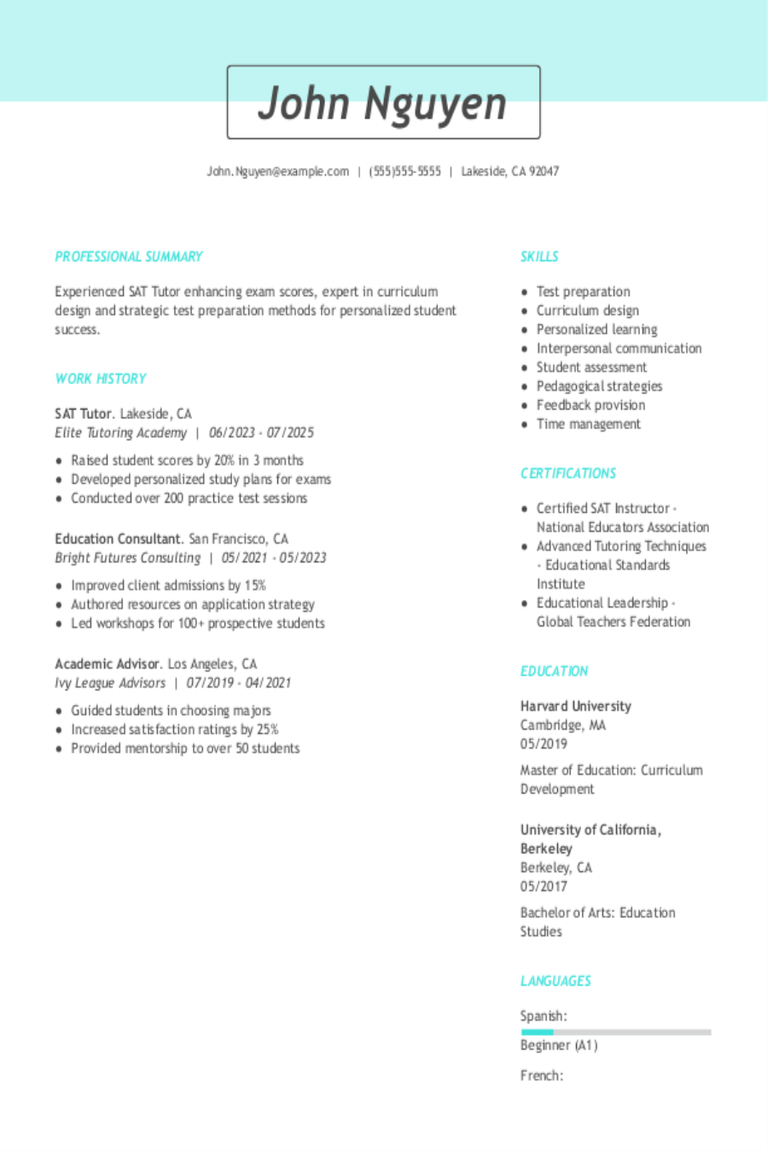
SAT Tutor Resume Examples & Templates for 2025
Explore SAT tutor resume examples and tips to learn how to highlight your experience explaining complex topics, boosting student confidence, and adapting teaching methods to help students improve their test
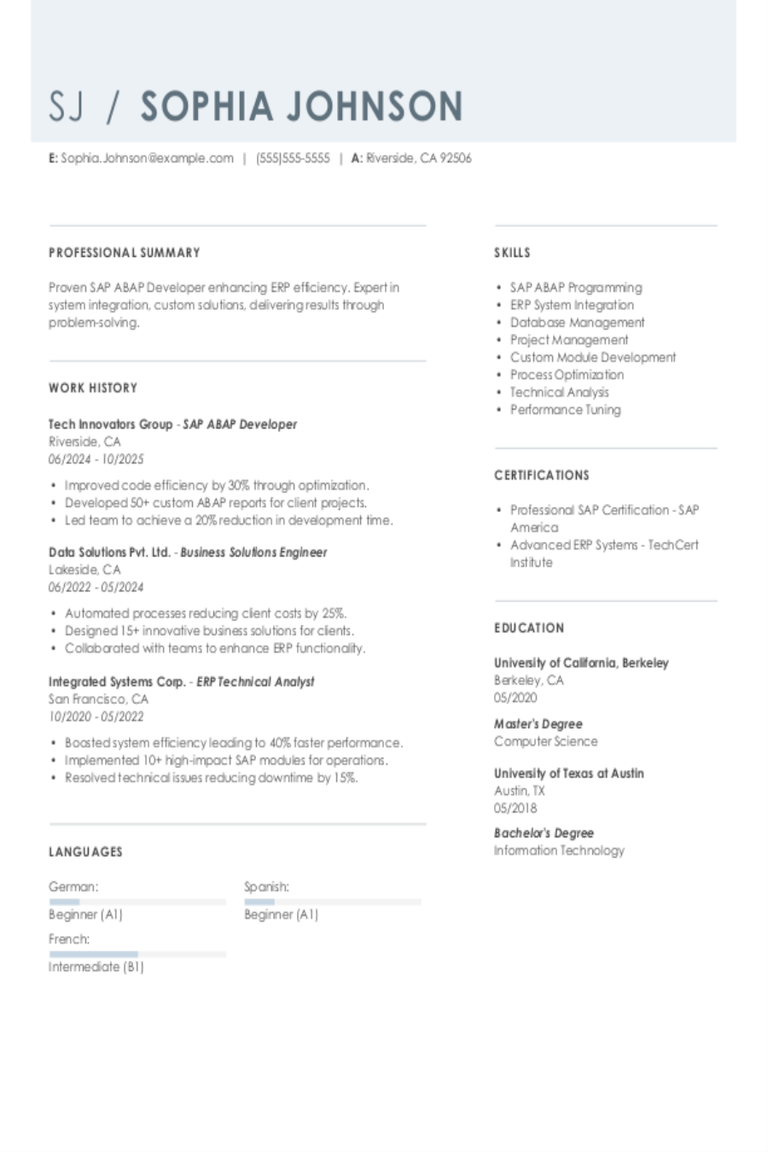
SAP ABAP Developer Resume Examples & Templates for 2025
Explore SAP ABAP developer resume examples and tips to learn how to spotlight your skills in coding, debugging, and system enhancements to stand out to hiring managers.Build my resumeImport existing
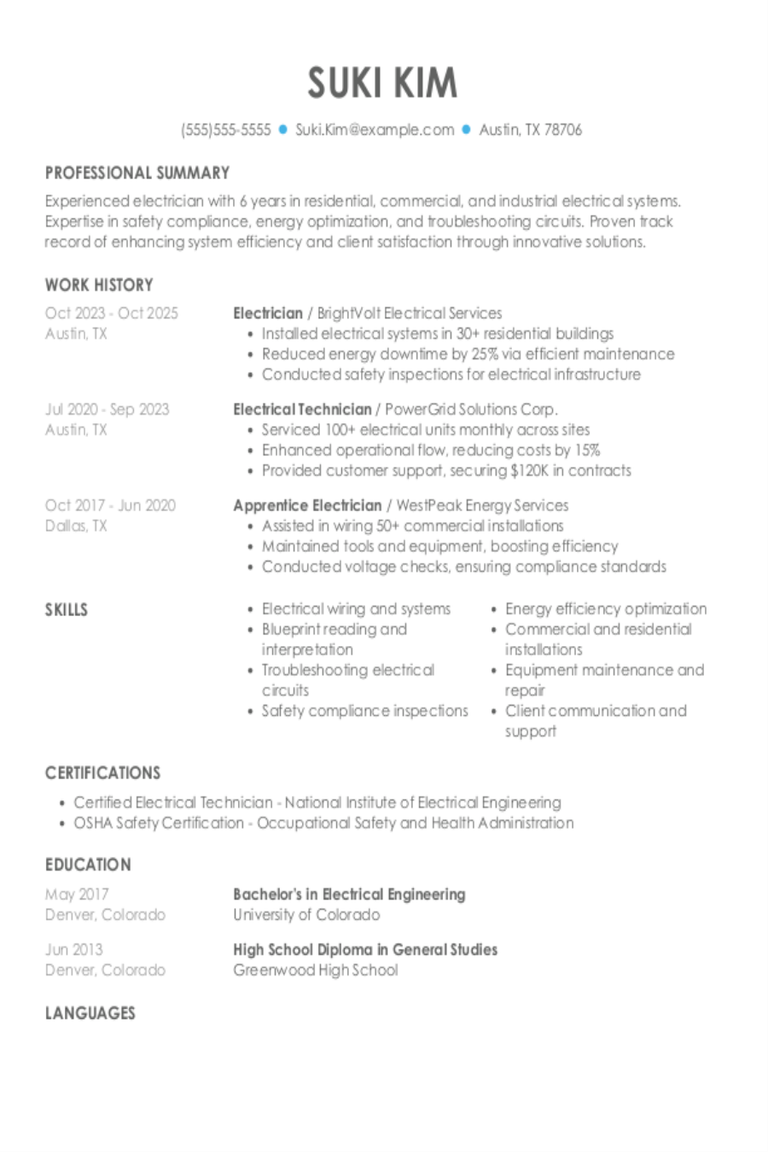
Electrician Resume Examples & Templates for 2025
Explore electrician resume examples to learn how to spotlight your wiring, troubleshooting, and safety skills. See how to emphasize your knowledge of electrical codes and highlight your experience across various
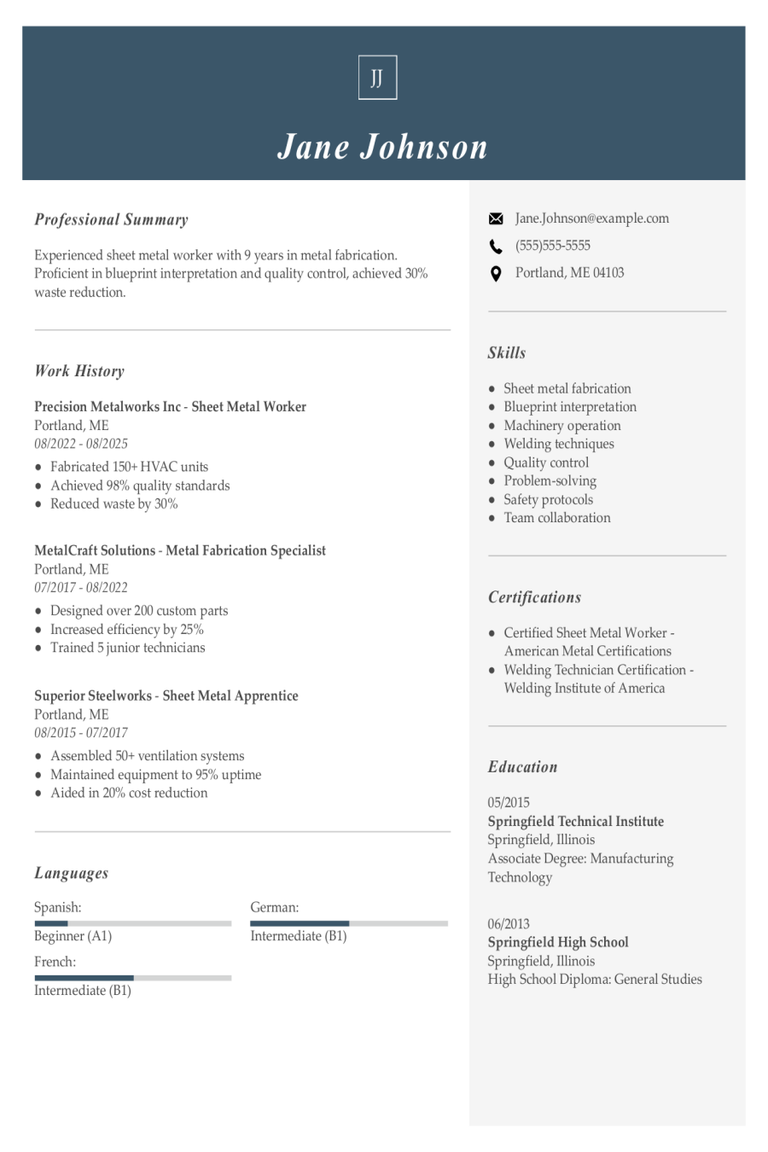
Sheet Metal Worker Resume Examples & Templates for 2025
Browse sheet metal worker resume examples and tips to learn how to highlight your hands-on experience and problem-solving abilities to stand out to recruiters and hiring managers.Build my resumeImport existing
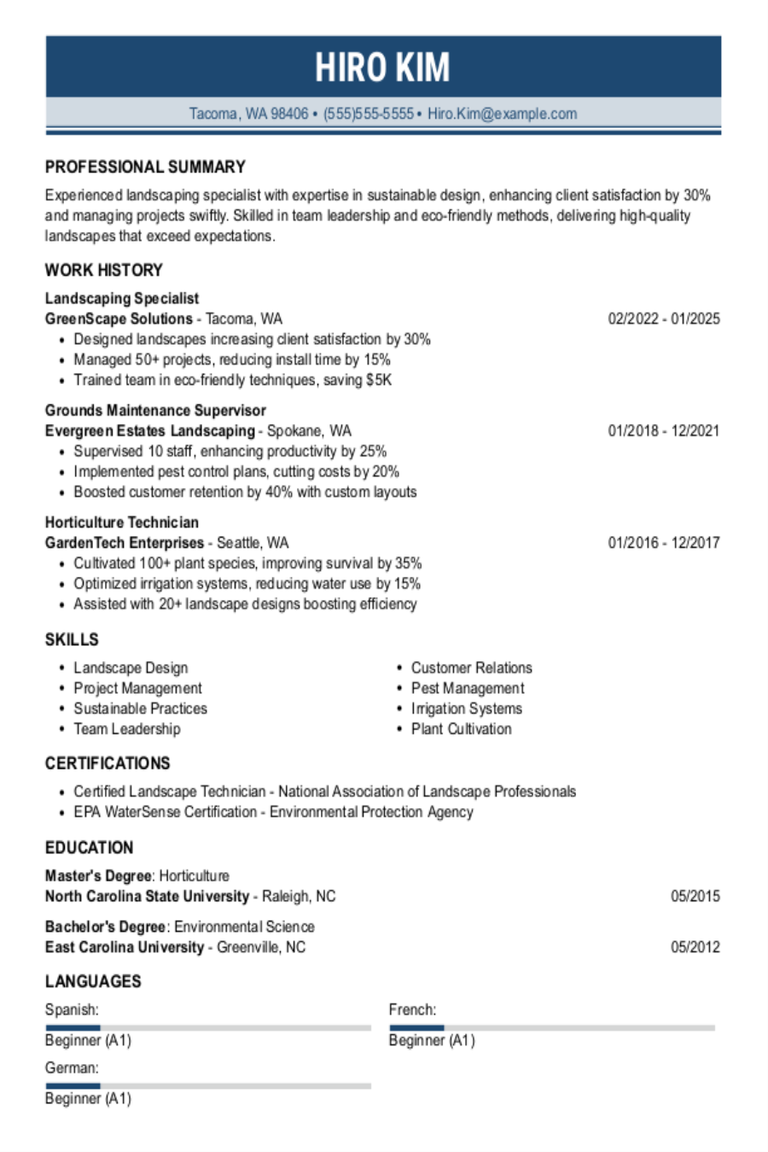
Landscaping Resume Examples & Templates for 2025
Explore landscaping resume examples to see how to showcase your gardening and design skills. Learn how to highlight your experience with plants, tools, and outdoor projects to catch the eye

